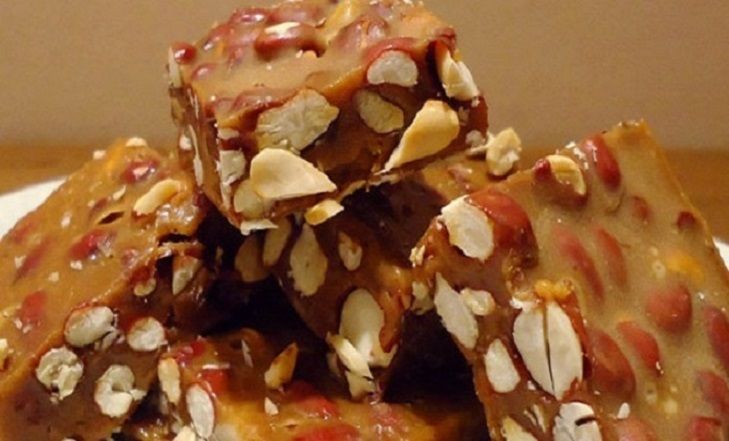Quickly prepare natural home remedies for inflammation. Tips against inflammation. Treat inflammation yourself without medication.
Inflammation is a completely normal and healthy defense reaction of the body to various stimuli. Not every inflammation requires medical treatment. Inflammation can often be treated with home remedies or antibacterial foods.
What is inflammation?
Inflammation is the body’s defense reaction to external stimuli or pathogens. The inflammatory process begins with reduced blood flow, followed by increased blood flow. White blood cells (leukocytes) are transported to the focus of inflammation in order to fight foreign bodies such as viruses and bacteria. Therefore, the leucocyte count in the blood is a clear indicator of inflammation.

If there is an inflammation, the question arises as to whether it is absolutely necessary to go to the doctor. If the inflammation is mild and the cause is known, the healing process can usually be completed without medical products such as e.g. B. painkillers or antibiotics taking place. The body has self-healing mechanisms that are stimulated by using appropriate methods. Various natural remedies that you can quickly make yourself are able to slow down the spread of the inflammatory focus and alleviate the symptoms.
1) Cold against inflammation
Acute inflammation on the skin’s surface often feels hot. In such a case, cooling pads can relieve the symptoms. An ice pack from the freezer can be wrapped in a kitchen towel and placed directly on the inflamed area. The external inflammation should be continuously cooled for a period of at least 20 minutes.
2) Balm for external use in inflammation
Open, inflamed wounds can be treated with marigold ointment. You can easily make this yourself:
Melt 2 tablespoons of clarified butter (how-to video for making clarified butter) in a saucepan. Then 2 tablespoons of marigold blossoms (available online or in pharmacies) are added. Swirl the compound in the pot over low heat for 12 minutes. The butter must not turn brown, if necessary the temperature must be reduced. Then the mixture is passed through a sieve, separating the marigold blossoms from the butter.
The finished skin cream can be stored in the refrigerator for a few weeks.
3) Curd soap for inflammation and splinters
If the nail bed on the hand or foot is inflamed, the curd soap is suitable. It is a pure soap product without fragrances and can therefore also be used by allergy sufferers without hesitation. Curd soap has a stronger cleaning character than conventional soaps. It can also be used for splinters on hands or feet. you do this, a warm water bath is enriched with some curd soap. The affected part of the body is soaked in soapy water for several minutes and then not rinsed with clear water, but only dried.
4) Medicinal plants against inflammation
Chamomile preparations have a soothing effect on inflammation. Chamomile can unfold its antiseptic effect in a variety of ways: as a tea to drink or to gargle with inflammation of the throat (mix peppermint leaves, chamomile blossoms, rose blossoms, and Dabei in the same ratio and pour boiling water over it). Or as a bath additive e.g. B. for impure skin (2 chamomile tea bags and 1 bag of lemon balm tea are added to the bathwater. The water temperature should not exceed 38 degrees. After 20 minutes, the chamomile water is drained and the body is rinsed with clear water so that the pores of the skin close again ).
5) Anti-inflammatory foods

allium plants
Garlic and onions are antibacterial leeks. These contain sulfur compounds (onion in A and the antioxidant quercetin in onions, ajoene, and allicin in garlic), which strengthen the immune system and thus have an anti-inflammatory effect. Onions and garlic can help with internal inflammation by taking them orally (neat, juice, powder).
Ginger
Ginger is particularly good for fighting inflammation in the muscles and boosting metabolism. The ginger can simply be added to the food when cooking or consumed in the form of homemade tea. For homemade ginger tea, water is first boiled. The ginger is peeled and cut into small pieces. The pieces of ginger are then added to the already cooled water if it is still at a pleasantly warm drinking temperature.
Omega-3 fatty acids
Omega-3 fatty acids, such as those found in e.g. in fish, and linseed oil. Nuts and seeds are of crucial importance in nutritional therapy for infections, but also preventively.
Arachidonic acid is responsible for the increased production of inflammatory cells. Omega-3 fatty acids contain alpha-linolenic acid, which can neutralize arachidonic acid.
Alpha-linolenic acid is an essential fatty acid that can be obtained from food alone. For this reason, it is particularly important to regularly consume foods that contain omega-3 fatty acids.


















